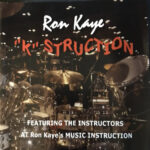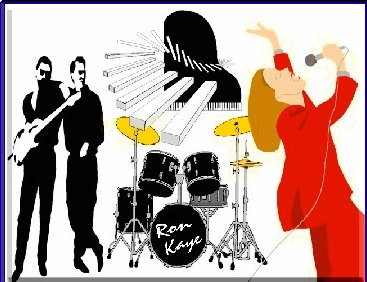Learning to play an instrument does not have to be difficult.
The idea that learning to play an instrument is difficult or hard is a topic that I would like to cover in my series,”Musical Myth Busters” as myth #5. (Myth Busters 1-4 can be found at musicalesspensacola.com under the archives and recent posts.) So with that in mind, let’s dig into the common sense facts and realities of learning to play an instrument.
Of course, the first obstacle is understanding why some people seem to take to playing an instrument with great ease while others of us seem to have to work harder.

The problem is not one of failure or inferiority but of understanding. All people have a certain level of natural ability when it comes to learning an instrument – some more than others. Now, this does not mean that we can’t reach any level of proficiency we desire. It only means that we have to employ more in the way of structured, disciplined practice in order to reach our goals. I have taught private lessons for decades, and I can tell you, there are two primary types of students – the naturally gifted student and the student who has less natural ability. Over the years, I have taught people who were blind, autistic, and had physical deformities. Our students have been from all levels of intellect from federal judges and lawyers, to doctors, to children as young as 4yrs. old. What they all had in common was the fact that they all had a need to understand the process of learning to play an instrument.
So what is the process for learning to play an instrument?
Well, it starts with the reality that if you are not one of those blessed with an abundance of natural ability, your best road to success is to enjoy the journey, understand that it takes self-discipline, devote the time to learning, and understand that the lesson room floor is to be littered with your mistakes. That is where they belong. The Marines have a great saying, ‘Pain is weakness Leaving the Body.” That is the right attitude, and the secret to success. If you understand the fact that you are going to make mistakes at home and in your lessons, you’ll understand that you are making them in order to identify them and eventually make less of them. You cannot avoid mistakes without first being able to identify them and then get rid of them. Many adult students will make a mistake in their lessons and feel embarrassed, like it was the most awful thing that could happen. Some will even go as far as cutting their lessons short saying that they need to go home and practice. Now, I understand the idea of subconsciously wanting to please the teacher, but the lack of understanding the process actually stunts their growth. Accordingly, some younger students will not like the perceived failure and the feeling of frustration and resist working through the process. The lack of understanding the process is perhaps the greatest obstacle to anyone succeeding at learning to play an instrument. Think about it. If you put the correct practice methods in place and you understand that you need to make mistakes, your practice will automatically become more productive and a lot less stressful.
Once you desire to identify your mistakes so you can eliminate them and patiently deal with them, you are ready to deal with another obstacle – making time to practice.

Let’s face it, learning to play an instrument is not a life threatening situation. No one is going to die if you do not practice like you should. However, practice has to become a priority of sorts. That is to say, you cannot bring this into your life and your daily routine if you are not willing to have the self-discipline to practice on a regular basis. I always asks kids,”How often should you practice?” The answer, invariably comes back,”a Lot?” From here I look at their daily routine. OK, you can’t take time away from your sleeping, eating, homework or school, so what does that leave out of a 24hr. day? Let’s see, do you spend time on your phone? Watch any movies? Play games? Talk with your friends? Any free time? It is these unessential times during the day where practice must come from. You would be surprised at how many times a kid has told me that they had no time to practice during the week. Really?! Even when summer break comes and they have an additional 40hrs. per week to practice, they still don’t have time to practice.
Now let’s look at the practice priorities for adult students.
Of course life has priorities: a job, providing for your family, and many other responsibilities have to be first. However, if you are serious about giving yourself a fighting chance at learning to play an instrument, you have to make a commitment to practice daily. You simply cannot succeed if you wait until you feel like practicing. After working a full day and eating supper, chances are you do not always feel motivated to practice. It requires the ability to make yourself practice. Usually, once you make that commitment, by the time you start, or shortly thereafter, you will lose the stress of the day and be glad you decided to practice. In the end, there is no way around the fact that it takes self-discipline to succeed. The laws of practice are very much like the physical laws that govern our world. Just as gravity works and “what goes up must come down,” repeated, focused motions will generate skills. Learning to play an instrument is composed of fine muscle movements and muscle memory. These two factors can be seen in many other disciplines such as martial arts or sports. If you want to perform a precision sidekick or an accurate free throw, practice or repetitions are the only way to improve and gain skills. Learning to play a musical instrument is no different.
Another obstacle for a music student to learn to play an instrument is patience.
Yes, if I had a magic wand I could just tap you on the the head and you would play awesome, but that is not reality. The fact is you have to repeatedly perform the tasks you are taught makes it very easy to get discouraged and frustrated. Many times a student’s focus on learning an exercise in a book results in a “Been There Done That,” mentality. So let’s say a student comes to a lesson and has past several pages of exercises, and in the lesson they forget many of the notes that they passed in prior lessons, we have to review. Often, the student has the attitude that they have already conquered those skills so they do not want to repeat them at their current lesson. The feeling is focused on having “passed” that lesson, therefore they do not need to go backwards. In this instance, the student completely misses the point and purpose of performing the exercise, they become impatient with the process. They forget that it is not a race through the book so you can say you are ready to move on. After all, if you complete the book and have not gained the skills, what did you gain?
The aspect of patience is closely related to being mentally involved with your practice.
By being mentally involve I refer the the intellectual exercise of focusing on the fundamentals of the skill you are working on. This may involve counting with the metronome, reading the notes as you count, following the notes with your eyes, and playing what you are counting. It may , on occasion, be necessary depending on the exercise, to study your technique as well.as perform the exercise at a very slow temp and gradually increase the tempo until you reach the desired point. One of the greatest secrets to success in learning to play an instrument is to play a piece at a very slow tempo like 56bpm. I call 56bpm painfully slow because it takes a greater degree of control to play something at 56bpm, because there is more time in between the beats to put the notes in the wrong time. Also at 56bpm your window of opportunity to spot your mistakes is pretty big. Once you can play steady and even at 56bpm, then you can take a mental inventory of what your hands, fingers, and feet are doing, depending on the instrument you are learning to play. You can take the time to think about what your limbs are doing and concentrate on playing relaxed. After you have reached this phase the next thing to do is to increase the tempo ever so slightly and repeat the whole process. So from 56bpm we can transition to maybe 76bpm and later 96bpm or more. The most important factors here is that you count with the metronome, read the notes and count them in time with the metronome, and follow the notes with your eyes. Many experts agree, it is better to play something slow and even and gradually speed up the tempo than hitting it at let’s say 130bpm with no prep. All of this takes patience. Enjoy the journey, do not rush through to the end and cheat yourself out of the benefit of honing those skills.


